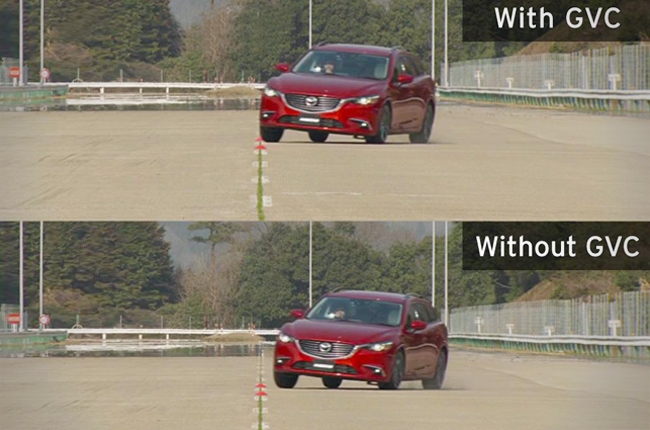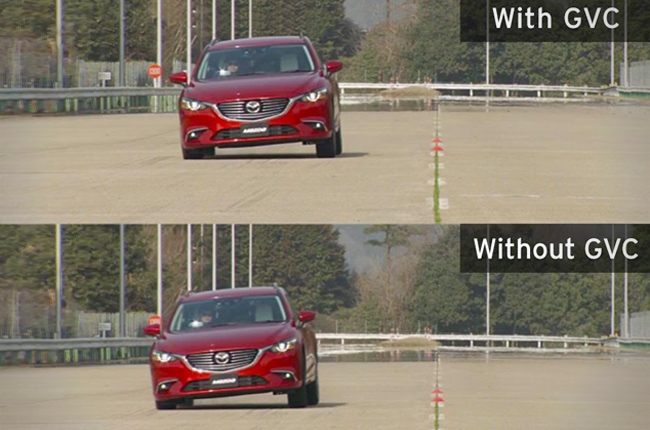
If it’s innovative car technology that you’re looking for, Mazda’s one of those brands that are on top of the pyramid. Their SKYACTIV Chassis, Body, Engine and Drivetrain technologies first introduced in the 1st generation CX-5 has won several awards for their lineup of cars. They also introduced SKYACTIV-D, which revolutionized the way diesel engines work. With these accomplishments in place, what would be Mazda’s next move?
Introducing, G-Vectoring Control – the first in the series of SKYACTIV-Vehicle Dynamics that aims to further improve the experience of driving. It’s already available in the updated Mazda2, refreshed Mazda3, both Mazda6 Sedan and Sports Wagon, and the all-new CX-5.
But what exactly is G-Vectoring Control and what’s its importance in the new lineup of Mazda vehicles?

Made in Japan
To understand how G-Vectoring works, Mazda gave Japanese words that are at the core of their design philosophy when creating their award-winning cars.
First is Hashiru Yorokobi, which translates to “joy from driving” or the “joy of being moved faster than you should be able to.” Mazda believes that when you drive, you feel 2 things – joy and fear. To eliminate fear, the Japanese marque made their cars intuitive and controlled, allowing you to experience pure joy while driving.
On the other hand, Jinba Ittai means “the unification between the horse and its rider” or in this case, oneness between the car and driver. You may be familiar with this since this has been mentioned even before SKYACTIV technology was introduced in the Philippines.
In connection to that, Yabasami, which is “a galloping horse with an archer standing on it while taking aim” is the ultimate goal in designing Mazda cars. This signifies the emotional bond between the driver and the car, so much that their movements are naturally in tune with each other.

The G-Vectoring Control advantage
Mazda’s G-Vectoring Control is a system that was developed over a period of 8 years. The long development phase allowed engineers to introduce software—yes, it’s entirely software—that aims to improve cornering response and stability. In a nutshell, the system was developed to further align to the above-mentioned design philosophy.
By reducing engine torque while cornering, load is shifted to make turning easier. G-Vectoring Control reduces body roll and jerk so that you’ll experience true joy from driving.
In order to do this, they focused on 2 main things – the Minimum Jerk Theory (MJT) and Equilibrioception.
MJT is perceived as the way humans naturally move, with minimal effort and lowest energy spent possible. On the other hand, Equilibrioception is also known as the sense of balance. It keeps us from falling over when moving or even while standing in place.
By taking note of these things, Mazda was able to find a way to control both phenomena while driving, which in turn, gives you the most joy that you can have from driving a Mazda car.
Latest Features
-
An all-electric future: The Porsche Macan Electric / Featured Article
Porsche’s Macan goes all-electric; it’s a new beast with an electrified heart, yet unmistakably Porsche in performance and spirit.
-
Which Kia should I buy? / Featured Article
We’re here to help you decide which Kia vehicle is best for you, whether it’s a sedan, crossover, or minivan.
-
Why Lynk & Co is a good option for luxury car buyers / Featured Article
Lynk & Co offers premium value for those exploring the luxury market.
Popular Articles
-
Electric Vehicles in the Philippines for under P1 million
Jerome Tresvalles · Aug 19, 2025
-
Top 3 Cars For Every Lifestyle—What Cars Are Right For You? | Behind a Desk
Caco Tirona · Apr 24, 2024
-
5 Tips to Maximize Fuel Efficiency
Jerome Tresvalles · Sep 09, 2024
-
Five driving habits that are draining your fuel tank
Jerome Tresvalles · Jun 24, 2025
-
Can engine braking harm your engine?
Jerome Tresvalles · Sep 11, 2025
-
Do electric cars even need maintenance?
Jerome Tresvalles · Oct 23, 2024
-
Best vehicles for an active outdoor lifestyle
Shaynah Miranda · Jul 25, 2024
-
How to drive different types of vehicle transmissions
May 23, 2024
-
5 easy ways to keep your car interior clean
Allysa Mae Zulueta · Nov 15, 2021
-
How to survive Metro Manila traffic
Earl Lee · Aug 16, 2022





